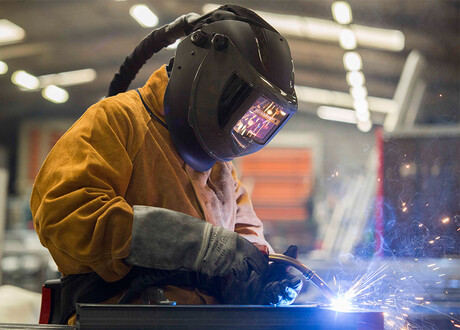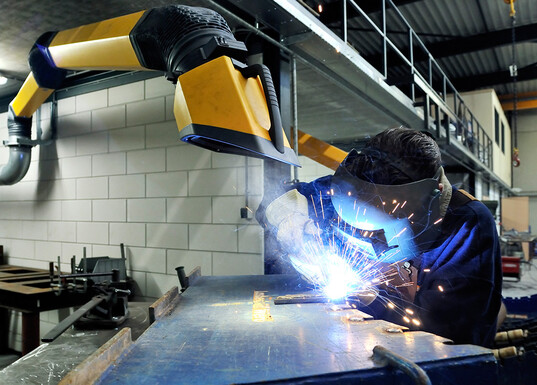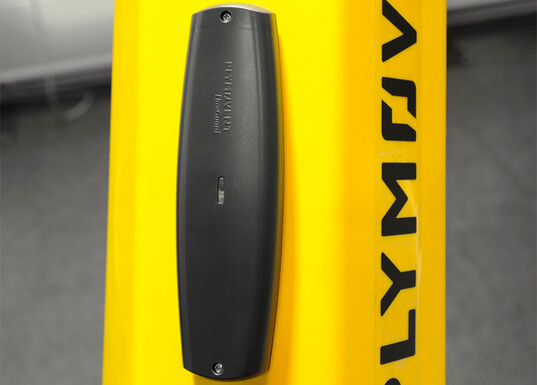The Dutch Labour Inspectorate has started strict inspections on welding fumes
Even if you're based elsewhere, it might be a good moment to check if your fume control measures still hold up – and Plymovent is ready to help.


In previous blogs we have written about protection methods for welders, like extraction arms or hoods for local exhaust ventilation and welding helmets with PAPR units. When you provide your workers with protection equipment, you may think that you have taken the necessary steps to ensure their safety. But, how can you be certain that the equipment is working as it should and your workers are not exposed to dangerous levels of carcinogenic fumes?
Protection equipment needs to be checked on a regular basis to see if it is still working adequately. In between these checks, it is possible that the performance of protection equipment diminishes, due to incorrect settings, defects or clogged filters. For example, the airflow in an extraction arm can be measured with FlowGuard.
Like Lord Kelvin said: if you cannot measure it, you cannot improve it. When it comes to extracting dangerous fumes and providing fresh air for workers, it’s not just about improving the equipment, but also about implementing any protection systems that are necessary (and about being certain the equipment is working as it should). For this purpose, you need monitoring systems.
Before doing so, it can be useful to determine what kind of welding is done most frequently, the materials used most often, and the settings specified for the welding performance. This way monitoring can initially focus on the most frequent operations. Air monitoring allows you to select the most appropriate protection systems. To measure how much dangerous fumes are emitted, monitoring the exposure to hazardous substances is the starting point. This way, you can determine whether an extraction hood or a flexible extraction arm can provide sufficient protection or if it is necessary to take any additional measures.
To check the amount of dangerous substances in the air that the welder breathes in, it is necessary to monitor the air in the worker’s breathing zone. This is done by placing monitoring equipment inside the welder’s visor or helmet. Workers will have to wear these sampling devices for a short period when they perform their normal welding tasks. This way, you can estimate the individual’s exposure to dangerous fumes and determine the effectiveness of the protection equipment.
In spite of all the protection measurements that have been taken, there is still a risk of exposure to dangerous fumes and gases. To measure the exposure by inhalation, skin contact or ingestion, it is necessary to use biological monitoring. A urine sample can be providing a lot of information about an individual welder’s exposure to the metals commonly found in dangerous welding fumes. If values in the biological sample are elevated, it is time to determine a new action regarding your protection equipment.
Bear in mind that air monitoring is a control instrument and not a substitute for extraction equipment or other devices designed to protect the health of your workers. Especially since recent scientific research has shown that welding fumes are not just dangerous but carcinogenic, always make sure that you use the right engineering controls to minimize exposure.


We're happy to help!